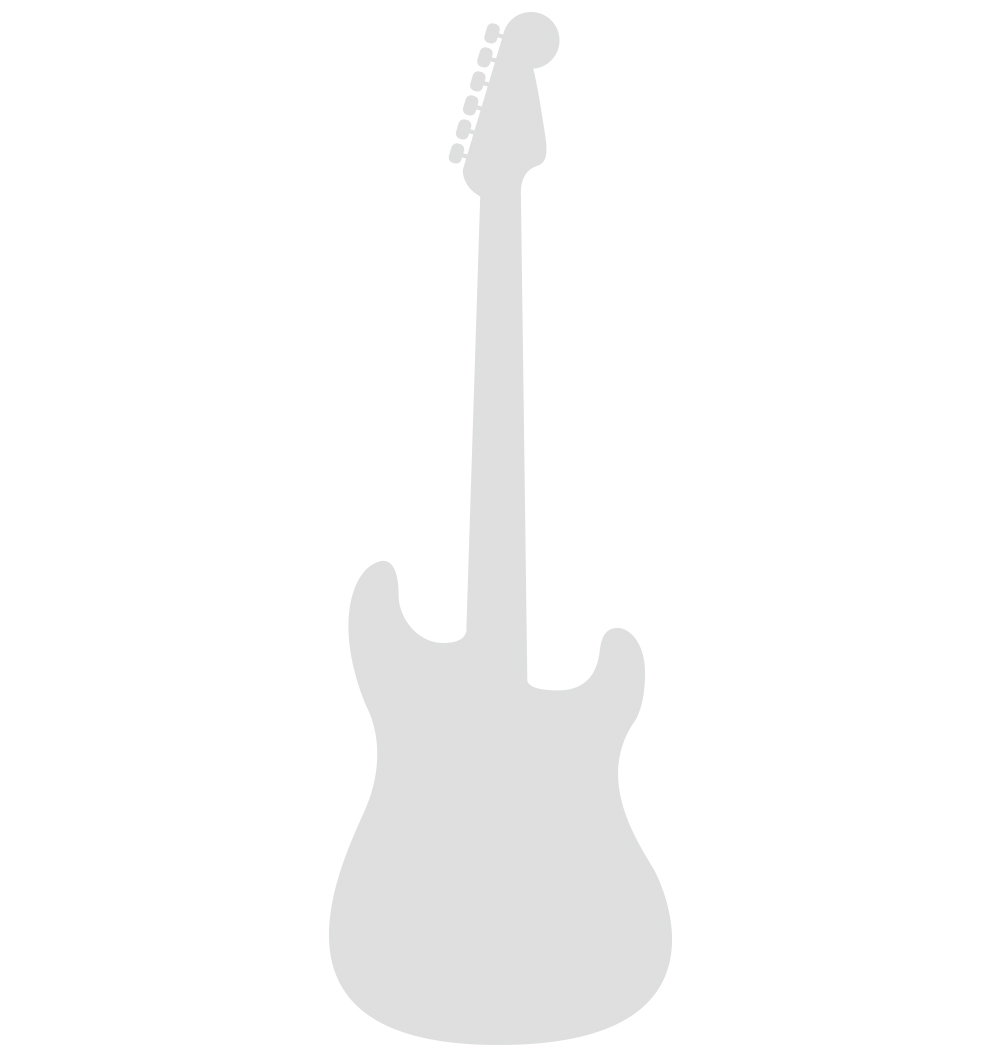Well before his enforced departure from the National String Instrument Corporation (see National article), musician George Beauchamp (1899-1941) had been developing a design for an electric guitar pickup. The unit comprised a coil assembly surrounded by two horseshoe-shaped magnets; the guitar's steel strings passed through it - beneath the magnets and over the coil - and the vibrations they produced when struck by a player's plectrum or fingers created disturbances in the magnetic field around them. These were converted to electrical currents by the coil, and fed (via a cable) to an external amplifier and loudspeaker.
Beauchamp's pickup (for which he was granted a U.S. patent in 1937) was the key component in the world's first mass-produced electric guitar, a Hawaiian model nicknamed the 'Frying Pan,' whose wooden prototype was built by ex-National employee Harry Watson in 1931. The same year, Beauchamp and his Los Angeles-based supporters Adolph Rickenbacker (1886-1976: an innovative engineer who had manufactured steel bodies and resonators for National) and Paul Barth formed the Ro-Pat-In Corporation to produce the instrument commercially - though in aluminium, not wood. One explanation for the firm's odd name is that its three syllables are part of a longer appellation: 'Elect-RO PAT-ent IN-struments.'
The 'Frying Pan' went on sale in 1932; the same year, Ro-Pat-In launched a wooden-bodied, 'Spanish' archtop model also equipped with Beauchamp's 'horseshoe' pickup. Both guitars appeared under the 'Electro' brand, and in 1934, Beauchamp, Rickenbacker and Barth renamed their company the Electro String Instrument Corporation, adding Rickenbacker's name (sometimes mis-spelled as 'Rickenbacher') to its headstock decals. For the rest of the decade, Electro continued to develop and innovate, introducing amplifiers, electric violins, and even Hawaiian and Spanish guitars made from Bakelite. Such products drew on Adolph Rickenbacker's prodigious engineering skills. He had previously worked alongside the Belgian-born inventor of Bakelite, L.H. Baekeland (1863-1944), and his subsequent industrial experience included a spell at Hotpoint, where he pioneered injection moulding techniques. He was also wealthy, and, in the words of the Rickenbacker Corporation's current Chairman, F.C. Hall, "more than anything, it was his cash that kept [the business] going."
In 1940, George Beauchamp resigned from Electro, but the firm maintained its prominent position in American instrument-making until 1942, when it was obliged to take up war-related work. After 1945, however, Rickenbacker/Electro was to resume and consolidate its position on the guitar scene.

PROTOTYPE RO-PAT-IN/ELECTRO 'FRYING PAN' HAWAIIAN GUITAR, 1931
The original 'Frying Pan', photographed at Rickenbacker's headquarters in Santa Ana, California. Its body was carved by Harry Watson from a single piece of maple; production 'Frying Pans' were made of aluminium. The pickup unit, designed by George Beauchamp, has massive steel horseshoe magnets, and twin screw terminals (visible on the pickup's bottom left) for an amplifier lead. Conventional jack sockets were fitted to later models. This guitar has no company name or decal on its headstock; early production 'Frying Pans' had 'Electro' engraved on them, and subsequently, a 'Rickenbacher [sic] Electro' label was used.

PROTOTYPE RO-PAT-IN/ELECTRO 'FRYING PAN' HAWAIIAN GUITAR, 1931
The original 'Frying Pan', photographed at Rickenbacker's headquarters in Santa Ana, California. Its body was carved by Harry Watson from a single piece of maple; production 'Frying Pans' were made of aluminium. The pickup unit, designed by George Beauchamp, has massive steel horseshoe magnets, and twin screw terminals (visible on the pickup's bottom left) for an amplifier lead. Conventional jack sockets were fitted to later models. This guitar has no company name or decal on its headstock; early production 'Frying Pans' had 'Electro' engraved on them, and subsequently, a 'Rickenbacher [sic] Electro' label was used.

RICKENBACKER/ELECTRO COMBO AMPLIFIER, 1930s
This easily portable amp has a built-in loudspeaker, and would often have been sold with an instrument as a 'set.'